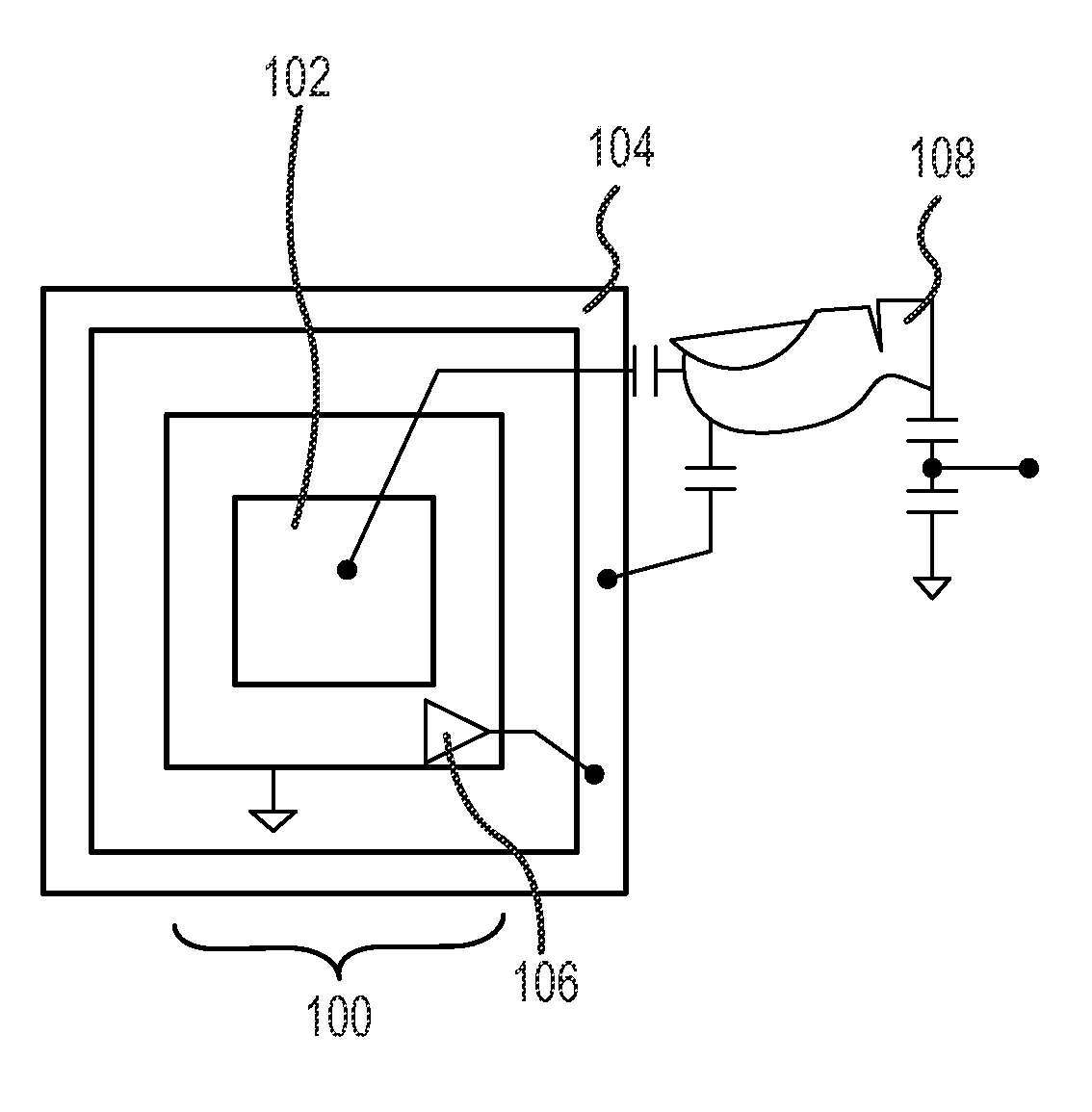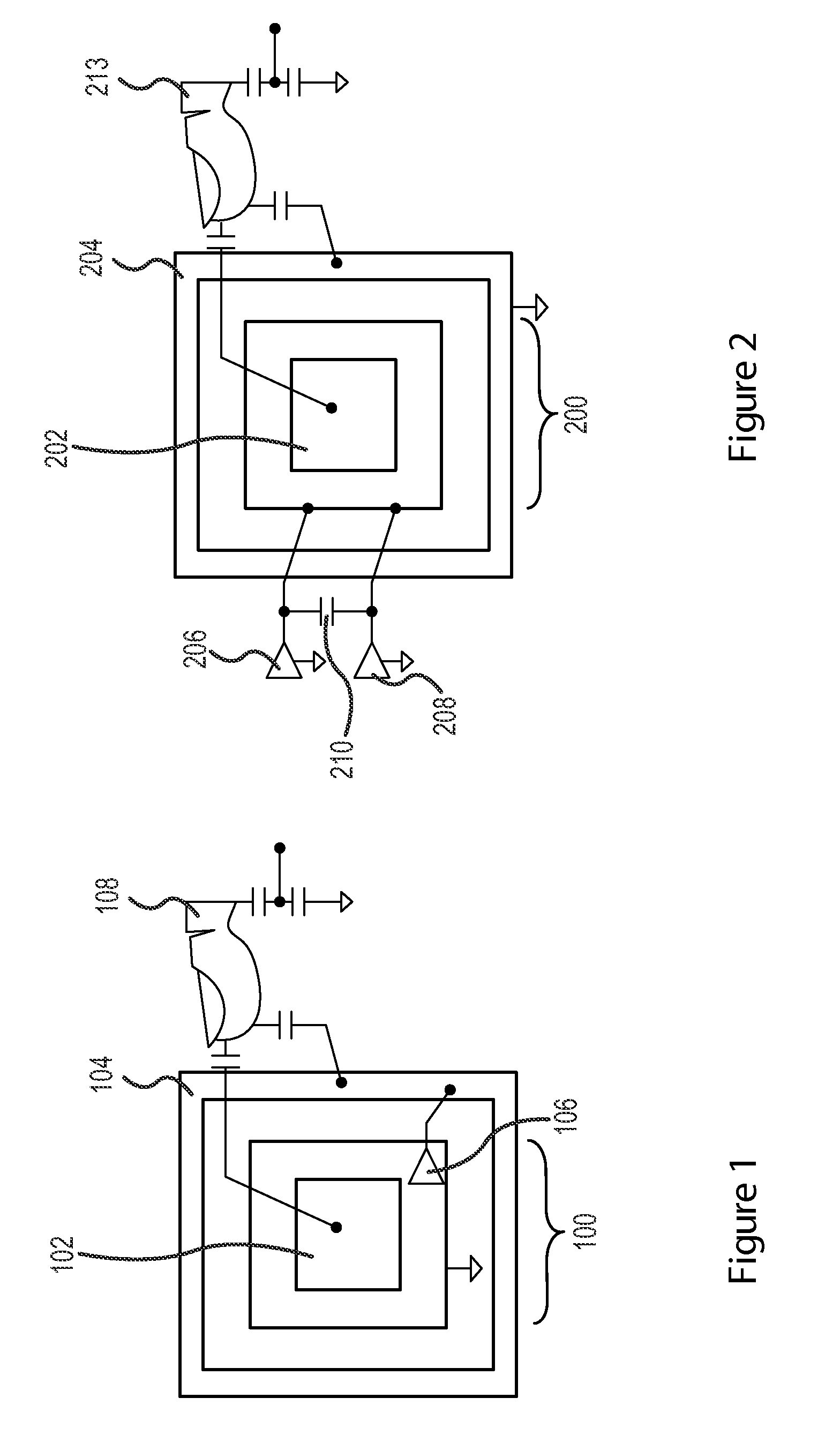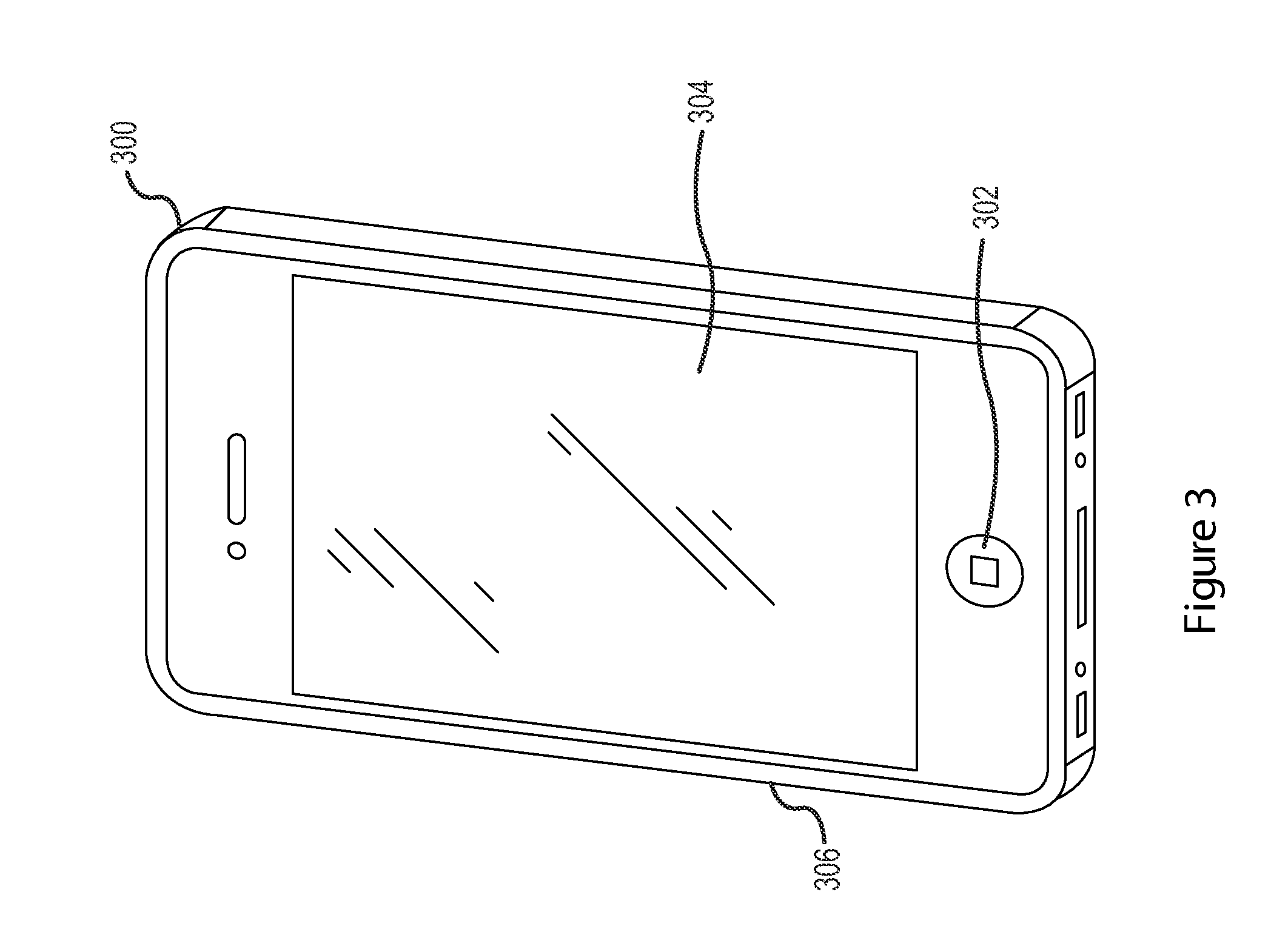Capacitive Sensing Array Modulation
a sensing array and capacitive technology, applied in the field of circuits, can solve the problems of limiting the voltage that may be applied to the drive ring, excitation the finger to too high a voltage, and the thickness of any dielectric overlaying the sensor may also be limited
- Summary
- Abstract
- Description
- Claims
- Application Information
AI Technical Summary
Benefits of technology
Problems solved by technology
Method used
Image
Examples
Embodiment Construction
[0021]Generally, embodiments discussed herein may take the form of a capacitive sensor, such as a fingerprint sensor. The sensor may be formed from a capacitive sensing element array; each capacitive sensing element of the array may register a voltage that varies with the capacitance of a capacitive coupling. A finger may capacitively couple to the individual capacitive sensing elements of the sensor, such that the sensor may sense a capacitance between each capacitive sensing element and the flesh of the fingerprint. The capacitance signal may be detected by sensing the change in voltage on the capacitive sensing element as the relative voltage between the finger and the sensing chip is changed. Alternately, the capacitance signal may be detected by sensing the change in charge received by the capacitive sensing elements as the relative voltage between the finger and the sensing chip is changed. Portions of the finger further away from the sensor may create a lower capacitance betw...
PUM
 Login to View More
Login to View More Abstract
Description
Claims
Application Information
 Login to View More
Login to View More - R&D
- Intellectual Property
- Life Sciences
- Materials
- Tech Scout
- Unparalleled Data Quality
- Higher Quality Content
- 60% Fewer Hallucinations
Browse by: Latest US Patents, China's latest patents, Technical Efficacy Thesaurus, Application Domain, Technology Topic, Popular Technical Reports.
© 2025 PatSnap. All rights reserved.Legal|Privacy policy|Modern Slavery Act Transparency Statement|Sitemap|About US| Contact US: help@patsnap.com



